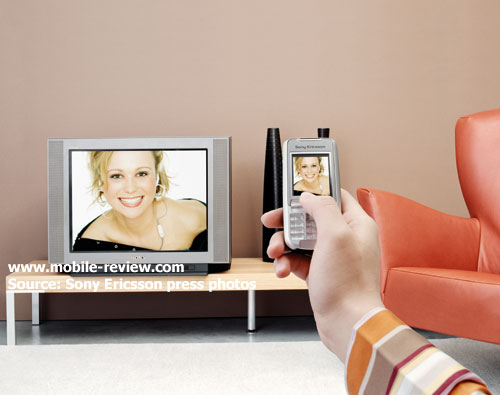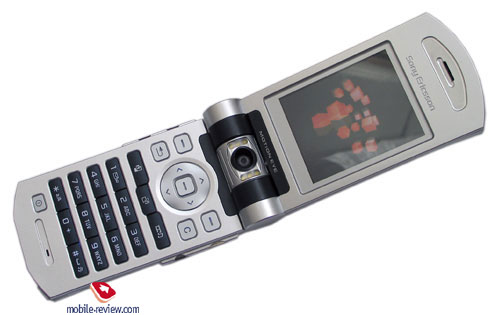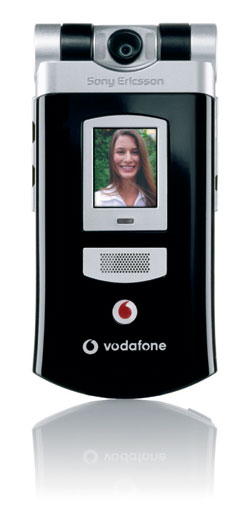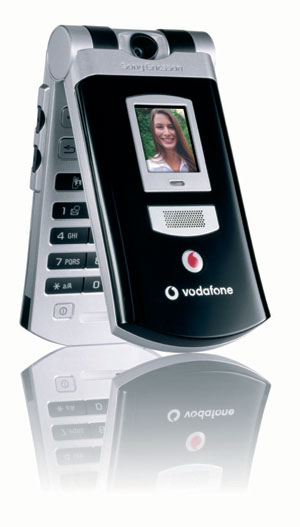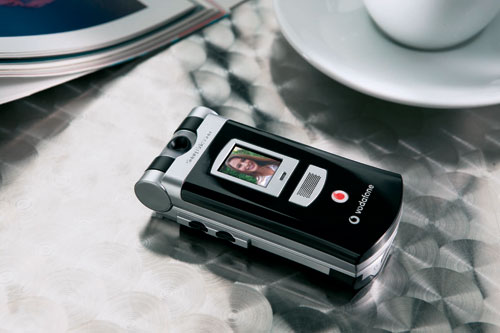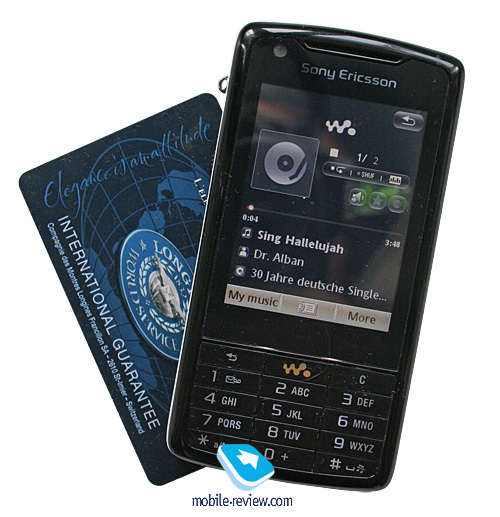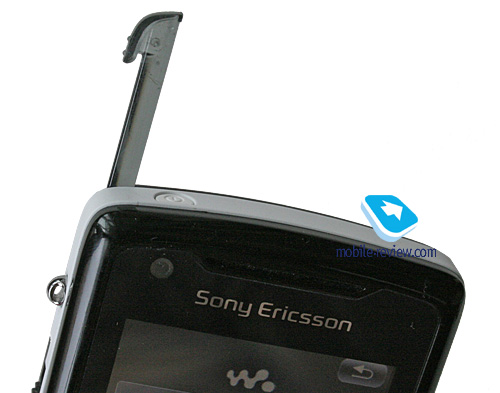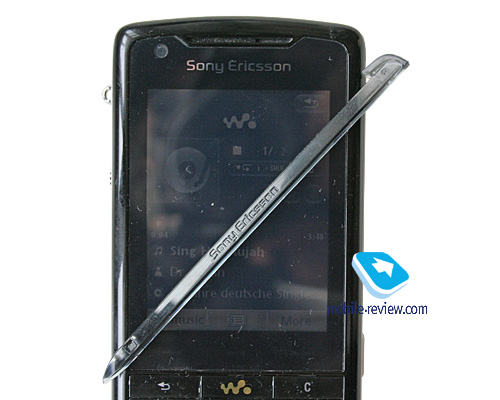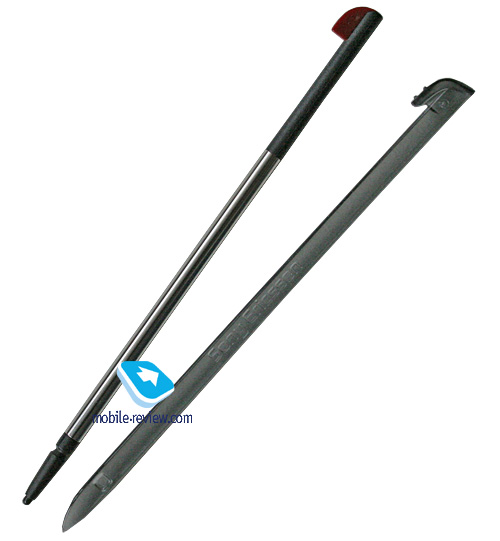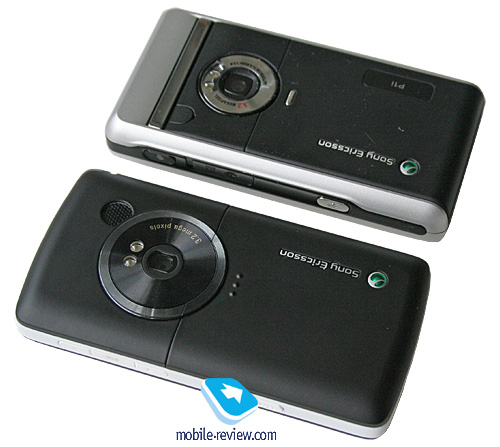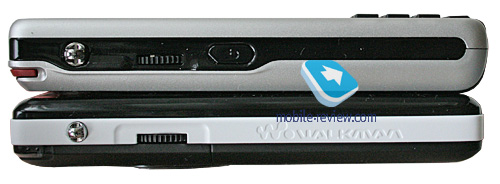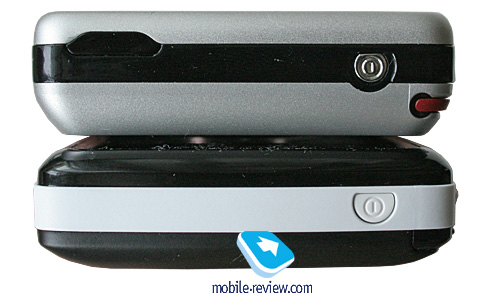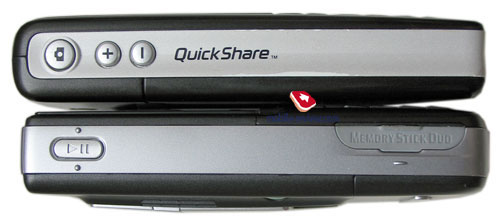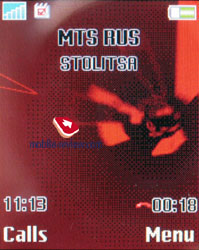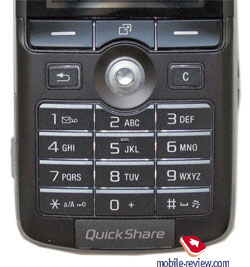The success of BlackBerry’s solutions has become a guiding line for many manufacturers, which have already taken a note of such solutions. Against the background of the growing popularity of these devices, the success has accompanied not the original BlackBerry, but smartphones armed with QWERTY-keypad, since they provided a completely new level of functionality and handling aspects. While the market of handsets equipped with a QWERTY-keypad wasn’t too large, even back then it was already developed enough, so one couldn’t ignore its tendencies. At present, the top 5 manufacturers propose this kind of phones, including smartphones. For example, Nokia offers one of these devices, which represents Eseries, Motorola features similar solutions in the framework of their A-series (not introduced into the European market, available only for the US and Asian markets), former Siemens mobile division has SK65 as a single device of that line-up. This list can be extended even further, but it’s more interesting to peek in their popularity statistics. At a first glance, if this many models have been introduced into various markets, they are in demand. But having a closer look you’ll realize that all this variety conceals only one undeniable fact – perpetual competition of smartphones (to be more precise, communicators, though the terminology doesn’t give a plain definition) and common handset with widened functionality. It’s obvious, that in smartphones a keyboard is vital since they offer capacities of working with mail and other similar services, although arming a standard device with a full-fledged keypad occurs due to two reasons. The former and the core one – possibility of drawing attention of a more conservative audience’s part, which seem to be afraid of relatively new technologies. This share of potential buyers is quite considerable, for them purchasing a smartphone is not essential, especially in light of the fact they will have to get used to a new platform. Yet the most distinctive difference between QWERTY-equipped handsets and “all-round standard” phones is exactly presence of this keypad. It’s a kind of vicious circle, which strongly affects sales of QWERTY-devices, which eventually turn out low. The latter target group could be those, who face the necessity of sending SMS messages pretty often and therefore requite higher speed of typing. Once again, all manufacturers are to deal with several negative aspects, like unwillingness of consumers to pay more for a device featuring a keyboard, or simple lack of functionality. In order to make it clear for you, let me set an example – remember such accessory as external keyboards for Ericsson handsets, this was an innovative solutions, providing fair functionality, though in the ended it failed in becoming a mass product.

A QWERTY-pad is usually featured in smartphones only as a handy addition to the overall functionality. What really exert influence on choosing a phone is set of incorporated functions, which is emphasized in all ads more that all other details. It may include a BlackBerry client (when the buyer uses this service and feels a need for this capacity), presence of WiFi, a touchscreen, etc. And among all these features, even though it may seem strange enough, a keyboard is just a clincher, helping to persuade a consumer to buy this or that handset. The share of people, who pick solutions exactly for their QWERTY-pad is insignificant and reaches 10 percent at best. However here I need to mention I’m not counting “maximalists”, in other words consumers, who are aiming at getting maximum of features and technical characteristics for a certain price – they consider presence of a keyboard as a handy feature and nothing more, I doubt even whether they know how to use it, but somehow it eventually appears on their wishes list.
Such a lengthy preamble was targeted to demonstrate that the market of QWERTY-handsets isn’t of large scope, and consumers don’t find this kind of devices extremely useful. Restating the aforesaid in different way, we may say that the success of QWERTY-keyboards on the European market depends on development of BlackBerry and similar services. Just one more note – communicators by Nokia stand aside this group, as they are aimed at a different market share.
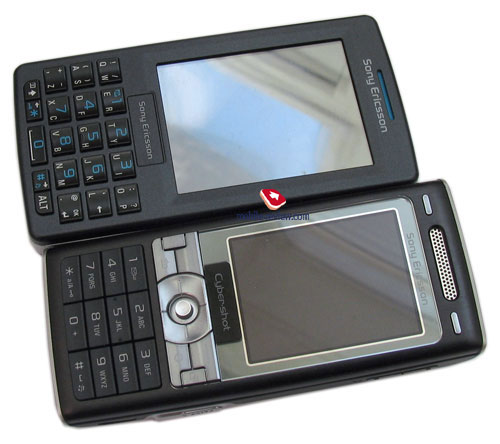
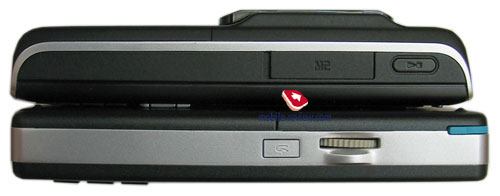
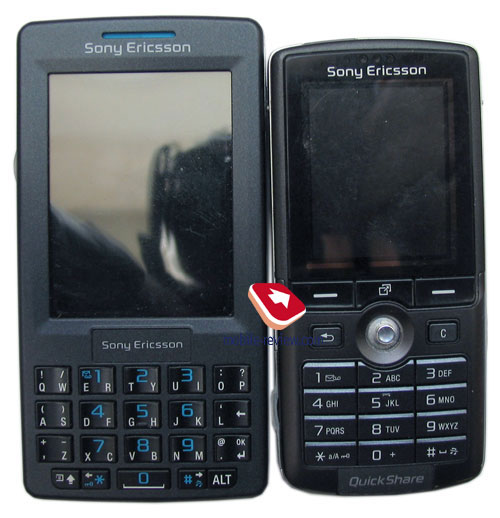
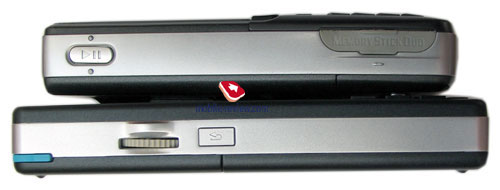
Sony Ericsson’s announcement of model M600, powered by a QWERTY-keypad, which is at the same time a smartphone working on Symbian 9.1 UIQ 3.0, doesn’t appear to be a sensible step – until the very recent times the company had specialized only on developing ultimate-solutions, covering maximum possible audience. As a matter of fact, the company was lacking facilities, thus couldn’t afford producing other handsets and widening line-ups. The release of М600 symbolizes taking one step forward – from invading the market to the next stage, where product line segmentation steps into the limelight and line-ups begin offering high profile solutions. The company doesn’t suppose that Sony Ericsson M600 will dominate over the market and hit higher sales rates than Sony Ericsson P990 – even considering the fact M600 costs less and possess eye-candy shapes. The main explanation why the handset isn’t aimed at securing a significant market share is unwillingness to create competition without the company’s own product line – that’s why the device doesn’t have camera module and WiFi embedded, since if it had both of them, it would be a direct rival to P990, but it’s evident, that this kind of competition is very dangerous. Putting the cart before the horse, I will note that the next justified step is producing a truly mass product based off М600, armed with a standard keyboard, but with a touchscreen. A device of this type may become a line-up’s flagship along with Sony Ericsson K800i. In favor of its release one can say that Sony Ericsson strictly follows UIQ concept, which describes various types of devices and combinations of control elements.
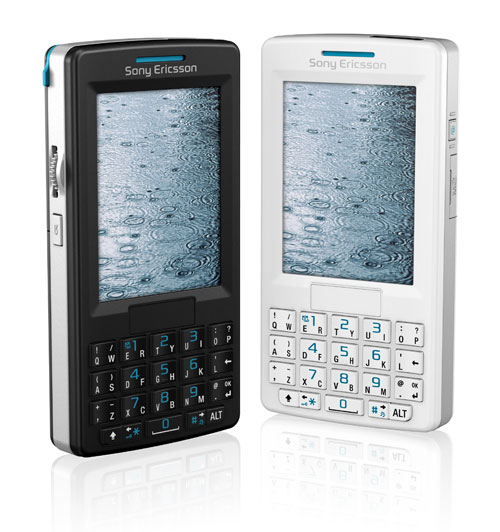
The handset is available in two color schemes - Granite Black and Crystal White. Measuring 107х57х15 mm, the device can be justly considered as a bearer of the very minimal thickness, and as a result, a product residing in the “slim” line-up. Its weight is 112 grams, which is also acceptable. The main material the casing is made of is plastic, similar to the other products by the company quality wise (e.g. Sony Ericsson K750i). This lets us assume that the majority of users won’t have any problems with the wearing out of the surface; nevertheless, active users like me will face this problem after 6-7 months of usage (scratches etc.).
Video, comparison of size with other devices (4.67 Mb)>>>
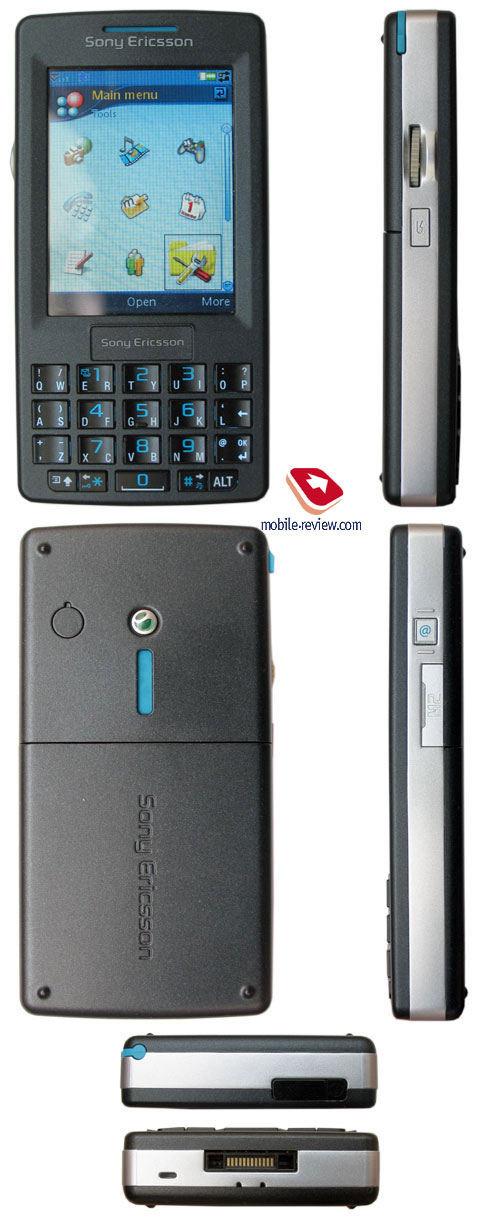
The side panels have silvery framings, this relates to both color schemes. The handset’s design appears pretty severe, with only blue details applied to the loudspeaker, back side and stylus varying the outlook.
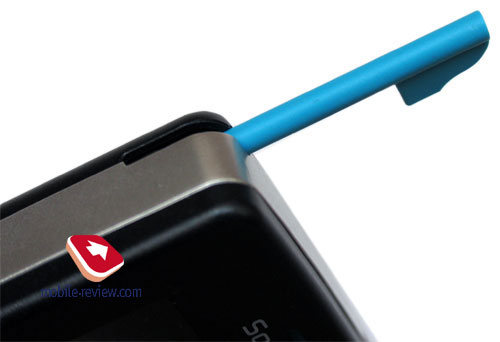
The handset fits both left and right hands, though the way all managing capabilities are organized, makes it clear that on the whole the phone is aimed at right-handers. In this case the device resides in left palm, and thumb is on JogDial button. This control function is equal to the same one, featured in Sony Ericsson P990i, there is a possibility of scrolling and pressing this key, however additional degrees of freedom, like it was in Sony Ericsson P910i, Sony Ericsson P900i are absent here. But basically this device doesn’t need this, as the software maximally corresponds with the incorporated controls, what makes it even handier. A bit lower than JogDial’s button one can find the Return key, which leads to a higher menu level or to the stand-by mode.
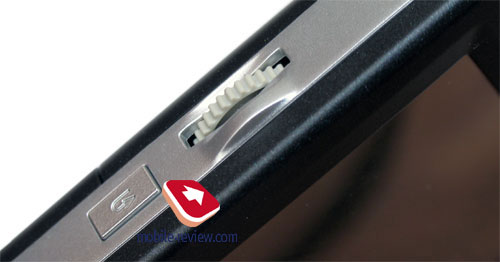
Video, handset’s design (7.23 Mb)>>>
The device doesn’t possess common hang/pick up keys, nevertheless all there functions can be performed via JogDial or context menus on the screen. You can easily move your finger to the screen and press popping up icons. The developers didn’t mean you to work with the phone without touching the screen in most of the cases (the only exception is Today screen and the media player). I should note, that it’s an easy way of organizing a menu – the most frequently used items can be accessed in one touch, at the same time in order to perform all other functions you’ll have to use the touchscreen, and this seems to be quite logical. The “OK” key may be used for making a call as well.
The device’s keypad is one of its high spots; therefore it’s natural, that we’d like to draw special attention to it. The keys themselves are small in size and have considerable span separating them from each other, that’s why you should be an extraordinary person to have frequent error presses. Despite the first impression, each key is double – it springs out from the fact there are actually two symbols on each button: one on the left and the other one on the right. When pressing any key you should have to have a clear idea of which side you’re pushing. This way of keypad realization is rather innovative, as so far it has been used only in one more handset. Pros are as follows: bigger keys, tied up with multiple symbols, rather the ones, featuring only one symbol per button. On the other hand, the drawbacks of this keypad are lengthy adaptation period and many error presses at the start. I can’t say this is the first QWERTY-device in my practice with an unknown layout, though fast typing was a real pain at first. For myself I have discovered the following explanation: when entering text, merging two keys into one and, consequently symbols allocated on them, distracts a bit – my mind just keep harassing me, that I should use this or that letter there, while it is placed on a key just next to the one my finger points at. Having not found the needed letter, for some reason my sight begins browsing all the lines without realizing that the symbol it needs it just in a few millimeters away. A curious psychological effect, that has been checked on several of my friends and every time the experiment ended up with the same outcome. In order to make completely sure of this phenomenon, I asked a colleague of mine from the US, who had been dealing with various solutions, armed with a keyboard, to try out this handset. Even though it took him much less time to get used to that system, he admitted that it requires certain skills and concentration of attention at first. So now we can rightfully draw a final conclusion: the QWERTY-keypad in this device significantly differs from all the solutions, presented on the market nowadays and requires some time to get used to – anyway, all you’ll have to do is just to resign to the state of affairs and practice a bit.
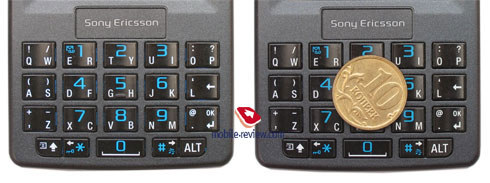
The numeric engravings are located right in the centers of the corresponding buttons are marked with blue color. In the majority of modes, when one can type only numbers, the numeric layout is activated automatically, but while entering information in text fields, you are forced to switch between the layouts manually (by pressing Alt). The upper line of additional symbols is called up in the similar manner. Typing speed is pretty high – even faster than on a normal keypad. Nevertheless you should realize that it may find yourself confused when trying to input treatises and essays using this kind of keyboard. In the presence of a touchscreen, the need for a QWERTY-keyboard is farfetched – the field, it can be applied to, is a number of special services provided by mobile operators. Apart from typing, using the keypad, you’re liberty to resort to the keyboard display and hand-written input mode. Model М600 is to be shipped in three different language editions, differing in layout engraving (English, Cyrillic, Azeri). The Russian market will officially offer models adopting both Russian and Latin layouts – there is no way the developers could combine these two in one edition due to lack of available space. At that you can programmatically assign symbols of English alphabet to all buttons, even when they have letters of Cyrillic alphabet engraved, although one can hardly find any use for this capability.
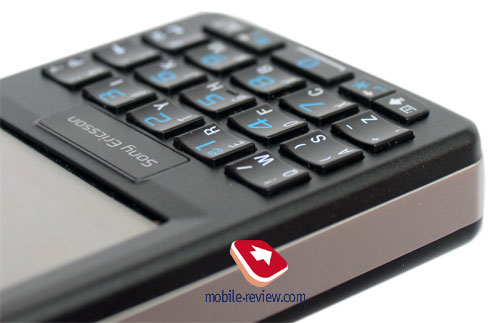
The keypad’s backlight is white, even though it’s not too vivid, one can clearly distinguish it under various conditions, including direct sunlight.
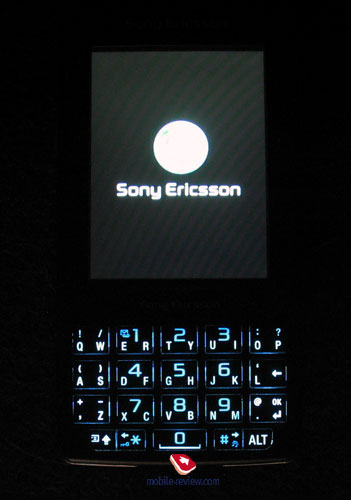
Video, working with keyboard, hand-written text sample (5.81 Mb)>>>
The model features a TFT QVGA display (240х320 pixel) with the diagonal of 2.6 inches. The screen doesn’t fade in the sun and what is more, provides a vivid picture with good color rendering (up to 262 K colors); therefore the phone leaves a favorable impression. Keeping in mind the fact, a number of functions require touching the screen, one could have expected an additional protective substrate, and an upgrade of Sony Ericsson P990i technology. Though the developers didn’t incorporate something like this into this handset, that’s why you should consider purchasing some screen protectors, since when touching the screen your fingers leave prints. Key and screen locks are also very essential in this device, as you can randomly press some buttons, while carrying the handset in your pocket (this function is realized on the software level with no separate key performing it is located on the body). I will emphasize that the device should not be transported in one place with keys and any other hard objects, since small thickness and exposure of the screen may result in damaging it; moreover the touchsceen isn’t intended for being carried along with any other items.
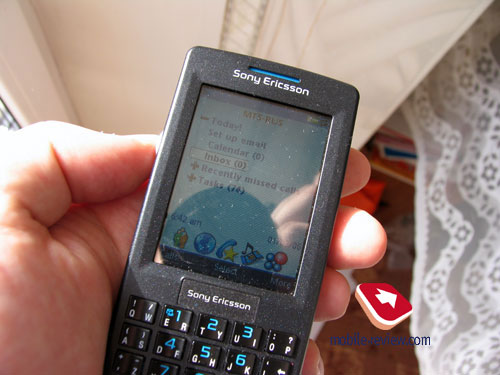
The right side holds WEB-browser start-up button, but it can re-assigned to calling up other functions. In contrast to Sony Ericsson W950i, there is no double key for adjusting volume, since its utility is doubtful considering the presence of JogDial, which can be used for changing volume in any mode. In place of this button, the developers have inserted MS M2 memory cards slot, covered by a plastic stub, fastened to the casing. At bottom there is a Fast Port interface connector, therefore the model supports all available accessories. The microphone is also located here. Finally, one will find the holes for applying a strap at this end of the shell.
The upper part features the power key (which is also used for changing profiles when at the stand-by screen) and IrDA port.
Unlike W950i, the back lid may have a small gap – even though it’s very minimal, but on hard pressed the cover utters strange sounds. The battery applied to this model is Li-Pol with a capacity of 900 mAh (BST-33). According to the manufacturer’s statement, it provides up to 340 hours of working in standby mode and about 7.5 hours of talk time. Under conditions of Moscow networks, the charge lasted for 2 days on average with an hour of telephone conversations, about 6 hours of music playback, 2 hours of listening to the radio and seldom files transfers via Bluetooth, mail checks (approximately 20 minutes) and web-pages browsing. Full recharge time of the device is around 2 hours.
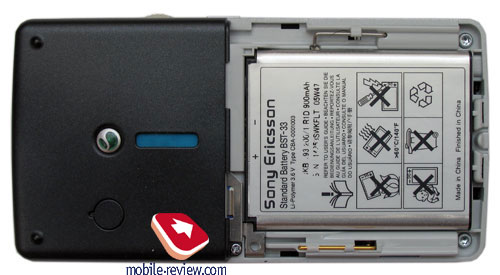
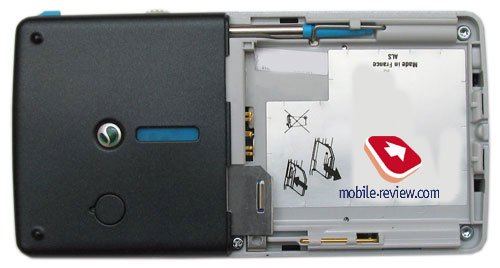
In the most intensive mode of usage, the charge on the batter will last for 1 day – during this time span you can not only listen to music without taking a break, but also check mail and browse Internet pages on regular basis. Taking into consideration that the majority of users don’t exploit capabilities of the device to this extent, we can talk about average life time of around two days, but it depends on every given case. Those, who don’t aim at listening to music and using other functions too often, the device will offer 2-3 days of life time. From my point of view, three days in this mode can be readily reached, but in this case, purchase of this device loses any meaning.


